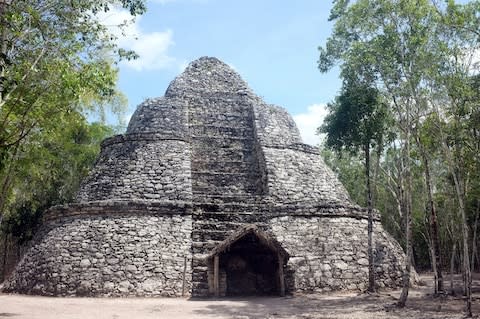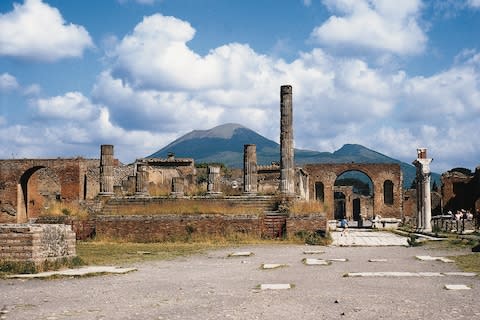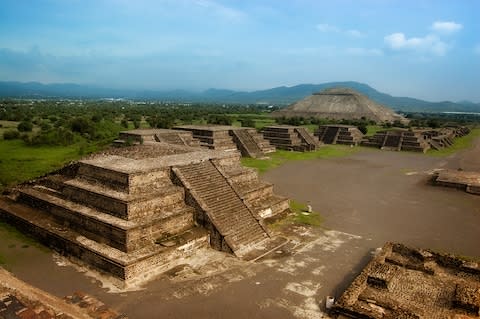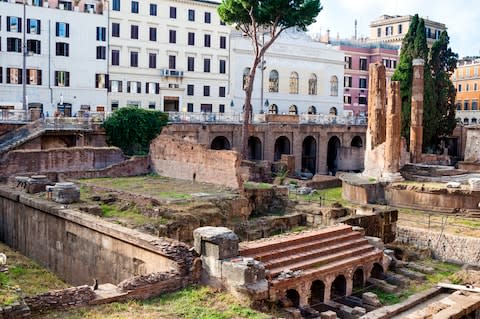The world's greatest ancient wonders – rebuilt

The world of the ancients is one that we are fascinated by. Millions of us flock every year to see the remnants of civilisations that created vastly impressive buildings using only the most primitive technology.
With many of these constructions having stood for thousands of years, decay is inexorable. So when you find yourself standing in front of one, it’s inevitable that you slowly reconstruct it in your mind – filling in the missing pieces and imagining how the ancient local inhabitants once lived.
But if you ever find your imagination wanting, we’ve stumbled across these clever gifs that rebuild seven ancient sites from across the globe to show how they may have looked in their prime.
The Parthenon, Athens
This is one of the most recognisable ancient sites in the world. Presiding over Athens on the Acropolis, the Parthenon was completed in 438 BC and dedicated to Athena, the ancient Greek goddess of wisdom, handicraft, and warfare – the city’s patron and protectress.

An enduring symbol of Ancient Greece, Athenian democracy and the origins of western society, the temple is one of the world’s most important cultural monuments.

Nohoch Mul Pyramid, Coba
Due to its remote location in the dense jungle of Mexico’s Yucatan Peninsula, the ruins of Coba have been spared the droves of tourists that other Mayan sites have experienced.

At the centre of 16 Mayan ceremonial “white roads” (sacbéob) stands the large pyramid of Nohoch Mul and archaeologists have estimated that as many as 6,000 structures exist (only three are open to the public) – all connected to this central building.

Temple of Jupiter, Pompeii
Dating back to the 2nd Century BC, Pompeii’s Temple of Jupiter was devastated, as the whole city was, by the earthquake of AD62 and then the catastrophic eruption of Mount Vesuvius in AD79. The highest Roman deity and the ruler of all other Gods, Jupiter was also the protector of Rome and the size of the temple signifies that the city lived under Roman rule.

The temple can be found at the northern side of the Forum and was the centre of religious life in Pompeii.

Milecastle 39, Hadrian’s Wall, Northumberland
The length of Hadrian’s Wall is dotted with remnants of the great structure that the Romans built to keep out marauding Celts. Milecastles housed the troops that patrolled the wall. As their name suggests, milecastles were small forts placed a Roman mile apart. They were manned by a garrison of approximately 20–30 auxiliary soldiers.

Milecastle 39 occupies a stretch of the wall that passes through Northumberland. The gap between the milecastle’s turrets (39A and 39B) is believed to be the longest along the entire length of the wall. While it may not look like much today, the reconstruction demonstrates how impressive a structure it once was.

Luxor Temple, Luxor
The large temple complex of Luxor took around a century to build and enjoyed the patronage of some of Egypt’s most prolific pharaohs. Work was started by Amenhotep III in 1390 BC, continued by Tutankhamun and completed by Horemheb in 1295 BC. Rameses II then added to the complex (1279-13 BC) and a granite shrine was dedicated to Alexander the Great between 332 and 305 BC.

Once known as Thebes, the City of a Hundred Gates, Luxor was the capital of Egypt from the 12th dynasty (1991 BC) through to the New Kingdom era. Three quarters of the temple lay buried for centuries and as the city grew, houses were built on and around the famous site until it was excavated between 1884 and 1960.

The Pyramid of the Sun, Teotihuacán
Mexico’s Pyramid of the Sun is the largest building in Teotihuacán and the third largest pyramid in the world (after Khafre and Khufu in Giza). While it was given its name by the Aztecs, the pyramid was built by the Teotihuacans in around 200–100 BC and its purpose is still a matter of conjecture.

What is known is that what we see today is the core of the structure, and it would have once been covered in a lime-based plaster decorated with vivid murals and religious images. It is still possible to climb to the summit, where there are sweeping views over the Avenue of the Dead.

Aedes Fortuna Huiusce Diei (Temple B), Area Sacra di Largo Argentina, Rome
In the 1920s, the Largo di Torre Argentina was discovered and found to house four Roman temples – designated the letters A, B, C and D. Temple B is the most recent of the four and is now known as Aedes Fortuna Huiusce Diei (the Temple of Fortune of This Day). It was constructed by Quintus Lutatius Catulus in around 101 BC.

Six of the circular temple’s Corinthian columns still stand but the large statue of the goddess that was discovered during excavations is now kept in the Capitoline Museums.

Images provided by Expedia.

